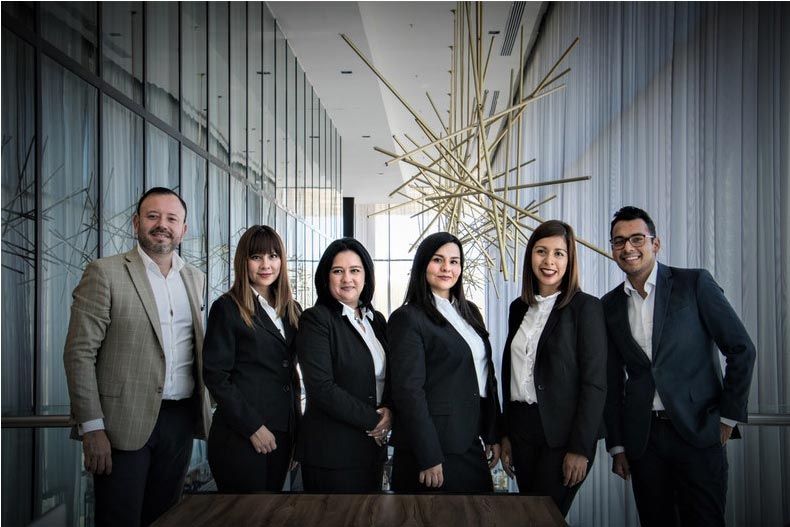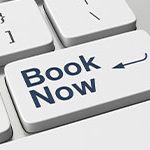We’ve all heard the saying, “Don’t judge a book by its cover.” However, in the real world, appearances matter. First impressions are formed within seconds of meeting someone, and they’re heavily influenced by personal appearance. Studies show that you only ever get one chance to make a first impression and apparently, it takes just seven seconds for someone to decide what they think of you. Individuals who present themselves well are often perceived as more competent, reliable, and trustworthy.

Appearance is everything
In interviews this statement is particularly true; your appearance is the first thing your potential employer sees. So if you turn up in joggers and t-shirts to an interview where everyone is wearing suits and co-ords – not that we think you would! – this wouldn’t create a great impression.
When it comes to first impressions, it doesn’t matter what your credentials are, it could be a tough task to try and change someone’s opinion of you because no matter how inaccurate they are, the employer has already made up their mind.
For the first 60 seconds of an interview, the employer will assess your confidence and ability to present yourself. You have put a lot of hard work and dedication in to get to this point, don’t let your appearance – something that is within your control – let you down.
This attitude towards appearance and how it can change a mood is far from new. The New York Times published an article in 1979 on the subject: You are what you wear. It states: “The clothes we choose to wear, and how we choose to wear them, send out messages that reveal many aspects of personality and emotional health.”
Self-esteem and confidence can be influenced by several things, but one factor is your appearance. Here’s how you can change that and feel confident, not just for an interview, but every day.
1. Dress for success
Dressing appropriately for an interview isn’t about flaunting expensive brands or wearing the latest fashion trends. It’s about showing respect for the interviewer and the organization. When you dress professionally, it communicates your dedication, seriousness, and understanding of the role’s expectations.
Here are some dress ideas when choosing an interview outfit:
For Men:
- Suits: A well-fitted suit in a neutral color such as black, navy, or gray is often a safe choice.
- Ties: Opt for a conservative tie, ensuring it complements the suit.
- Dress Shirts: A crisp, clean white or light-colored dress shirt.
- Shoes: Polished leather shoes, preferably in black or brown.
- Socks: Match the socks to the color of the suit or shoes; ensure they cover the calf.
- Belts: Should match the color of the shoes.
- Briefcase or Professional Bag: A streamlined leather bag can add a touch of professionalism.
- Minimal Jewelry: A watch or a wedding ring, if applicable.
- Grooming: Clean-shaven or well-trimmed beard, neat haircut, and trimmed nails.
- Fragrance: A subtle cologne, not too overpowering.
For Women:
- Business Suits: This can be a pantsuit or a skirt suit, preferably in neutral colors.
- Blouses: A modest blouse that isn’t too low-cut. Solid colors or subtle patterns work best.
- Dress: A sheath dress or an A-line dress in a conservative length and color.
- Shoes: Closed-toe pumps or modest heels in black, navy, or nude.
- Hosiery: Neutral-toned or sheer stockings when wearing a skirt.
- Handbags: A structured handbag or tote in a neutral color.
- Jewelry: Keep it minimal and classic – think stud earrings, a delicate necklace, or a modest bracelet.
- Makeup: Neutral and minimal makeup, avoiding overly bold colors.
- Nails: Clean and neatly trimmed, with neutral or clear polish.
- Hair: Neatly styled, whether left down, tied back, or put up in a bun.
Remember, the key for both men and women is to strike a balance between looking polished and professional while also being comfortable and feeling confident in their choices. Always consider the specific industry and company culture when choosing an interview outfit.
2. Style it out
If you have long hair, wear it off your face. This will encourage you to make good eye contact and not hide behind your tresses. Studies have found that those who hold senior job roles tend to hold eye contact for longer. Think of eye contact as an essential non-verbal skill – hair which falls over your eyes can restrict this and act as a barrier – break it down and you’ll ultimately feel more confident and assertive.
3. Relax
Appearance doesn’t just come down to clothes and hair though, expressions and actions can also make up your appearance. Being relaxed and well-prepared before an interview is the best way to feel positive.
4. Grooming and Personal Hygiene
Your attire is just one piece of the puzzle. Proper grooming reflects your attention to detail and personal discipline. Whether it’s neatly combed hair, trimmed nails, or subtle fragrances, your grooming practices indicate your commitment to presenting your best self.
5. Body Language
Your non-verbal cues, or body language, can speak volumes. A firm handshake suggests confidence. Direct eye contact conveys honesty and interest. A relaxed posture implies ease and self-assuredness. Conversely, fidgeting, avoiding eye contact, or slumping can send negative signals to your interviewer.
6. Color Choices and Their Psychological Impacts
Believe it or not, the colors you choose to wear can send subtle messages. The study of attire color psychology suggests that different colors can evoke various perceptions. For example, blue is often associated with trust and reliability, while red can signify passion and energy.
7. Accessorizing Right: The Finishing Touches
Choosing the right interview accessories can elevate your entire look. A well-chosen tie, elegant jewelry, or even a professional briefcase can complement your attire. However, moderation is key. Overdoing it can come off as trying too hard or being inauthentic.
8. Blending Personal Style with Professionalism
While it’s crucial to adhere to the general dress code, infusing a touch of your personal style can make you stand out (in a good way). It allows your individuality to shine through, ensuring you don’t feel like just another face in the crowd.
9. Potential Pitfalls: Common Interview Attire Mistakes
From overly casual outfits to overly bold choices, many missteps can be made when dressing for an interview. Being aware of these interview attire mistakes ensures you’re always on point, presenting yourself in the best possible light.
10. Boosting Confidence from the Inside Out
While external appearances play a significant role, internal confidence is paramount. After all, if you don’t feel good on the inside, it’ll show on the outside. Embrace confidence-boosting tips, such as affirmations or visualization techniques, to ensure you walk into every interview feeling self-assured.
Conclusion
This is easier said than done when you’re attending an interview, but can affect whether or not you’re successful. Forbes looked into managers’ perceptions of appearances and reported that of 500 hiring professionals interviewed, 15% of them said they would consider hiring a woman who frowns – meaning 85% of hiring managers wouldn’t want to hire a woman who didn’t smile.
While appearance isn’t everything, it does play a huge part in interviews and the hiring process. Take time to do what makes you feel confident, whether it’s having your hair done, or wearing a new outfit – the little things can make a big difference.










